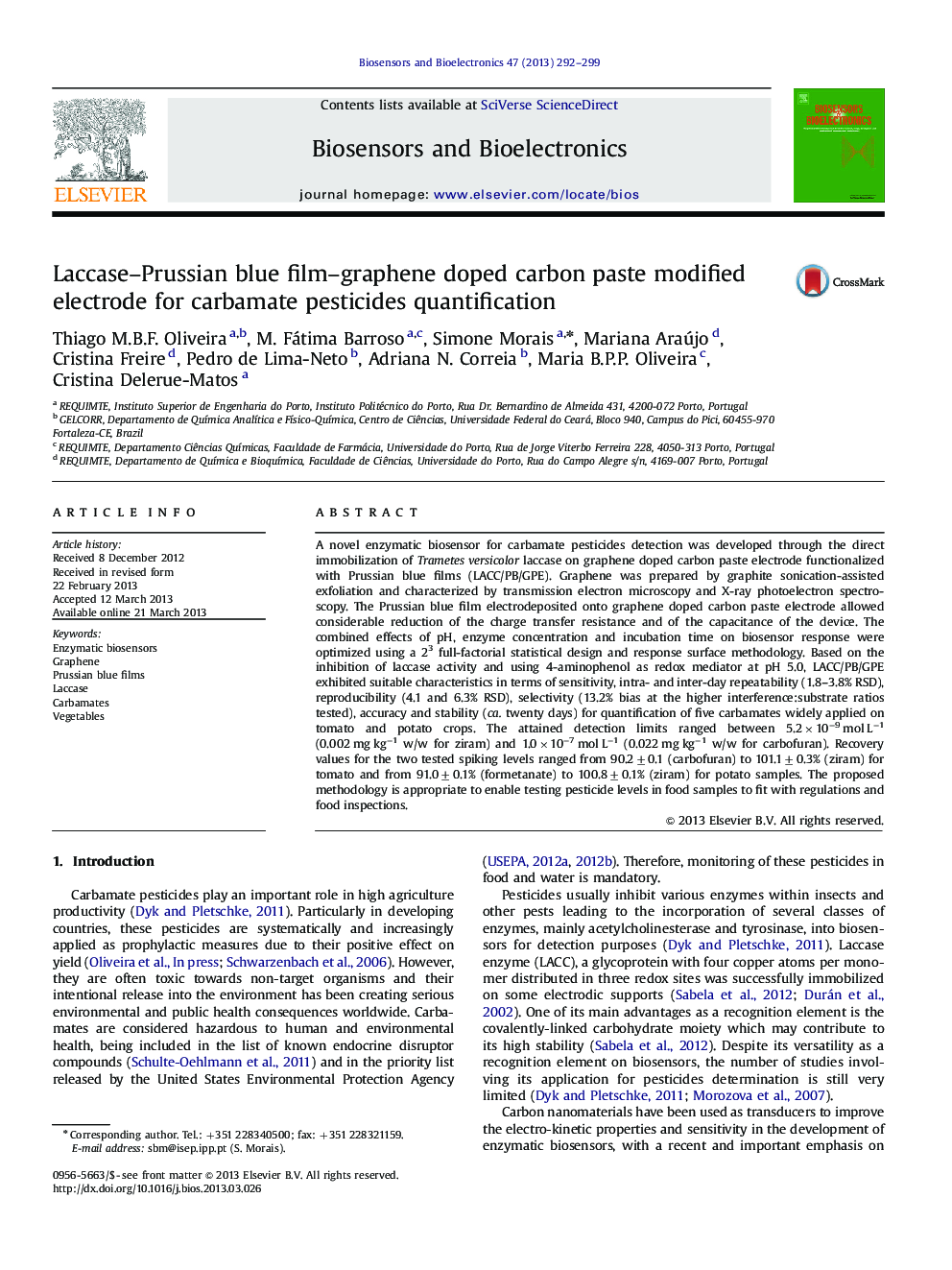| Article ID | Journal | Published Year | Pages | File Type |
|---|---|---|---|---|
| 866973 | Biosensors and Bioelectronics | 2013 | 8 Pages |
•Graphene doped carbon paste/laccase biosensor was developed to quantify carbamates.•Electrodeposited Prussian blue film allowed direct immobilization of laccase at pH 5.•Biosensor showed good sensitivity, repeatability, selectivity, accuracy and stability.•The enzymatic biosensor was successfully applied to vegetable crops.
A novel enzymatic biosensor for carbamate pesticides detection was developed through the direct immobilization of Trametes versicolor laccase on graphene doped carbon paste electrode functionalized with Prussian blue films (LACC/PB/GPE). Graphene was prepared by graphite sonication-assisted exfoliation and characterized by transmission electron microscopy and X-ray photoelectron spectroscopy. The Prussian blue film electrodeposited onto graphene doped carbon paste electrode allowed considerable reduction of the charge transfer resistance and of the capacitance of the device. The combined effects of pH, enzyme concentration and incubation time on biosensor response were optimized using a 23 full-factorial statistical design and response surface methodology. Based on the inhibition of laccase activity and using 4-aminophenol as redox mediator at pH 5.0, LACC/PB/GPE exhibited suitable characteristics in terms of sensitivity, intra- and inter-day repeatability (1.8–3.8% RSD), reproducibility (4.1 and 6.3% RSD), selectivity (13.2% bias at the higher interference:substrate ratios tested), accuracy and stability (ca. twenty days) for quantification of five carbamates widely applied on tomato and potato crops. The attained detection limits ranged between 5.2×10−9 mol L−1 (0.002 mg kg−1 w/w for ziram) and 1.0×10−7 mol L−1 (0.022 mg kg−1 w/w for carbofuran). Recovery values for the two tested spiking levels ranged from 90.2±0.1 (carbofuran) to 101.1±0.3% (ziram) for tomato and from 91.0±0.1% (formetanate) to 100.8±0.1% (ziram) for potato samples. The proposed methodology is appropriate to enable testing pesticide levels in food samples to fit with regulations and food inspections.
